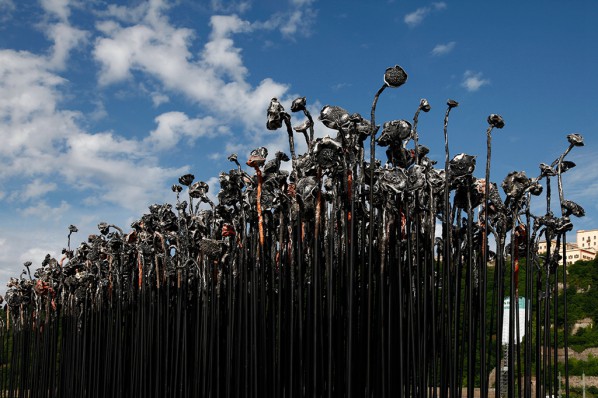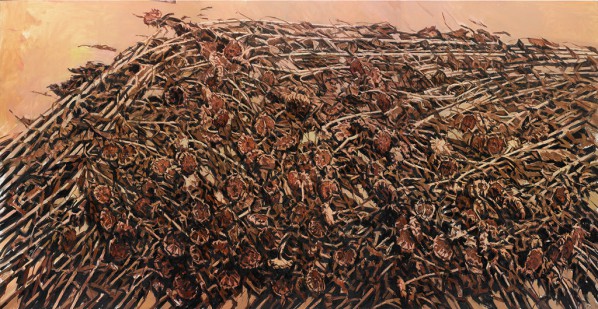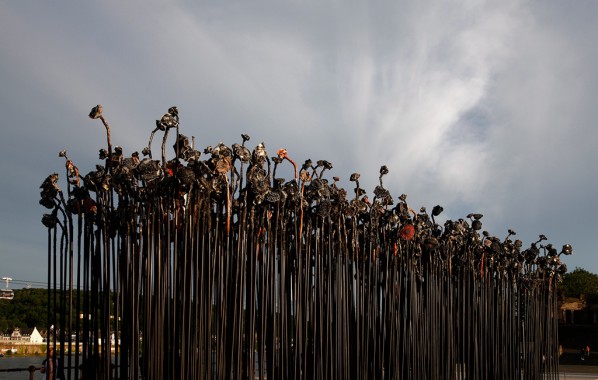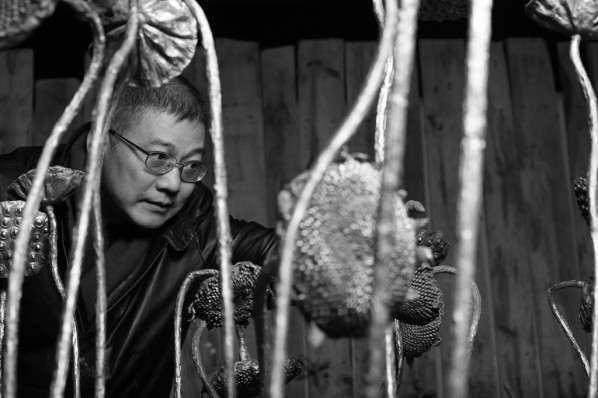
Xu Jiang, Is It Possible for Them to Live Together
The China Artists Association, National Museum of China and China Academy of Art will jointly present “the Oriental Sunflower: the Art of Xu Jiang”, from September 28th to November 8th, 2014, at the National Museum of China. The exhibition will showcase the most recent decade of Xu Jiang’s creative career, with almost fifty large-scale oil paintings and over a hundred watercolor works. His monumental sculpture Is It Possible for Them to Live Together? will also be exhibited for the first time in China. This is bound to be yet another grand exhibition since Xu Jiang’s return from his European tour, which saw his works exhibited in the Staatliche Kunstsammlungen Dresden, and Ludwig Museum Koblenz. For this unique occasion, Xu Jiang has created the themed series the Oriental Sunflower, which offers the audience a rare glimpse into his latest explorations in the medium of oil painting.

Xu Jiang, The Oriental Sunflower, 2014; Oil on canvas, 280cmx540cm

Xu Jiang, Is It Possible for Them to Live Together
The exhibition features four sections marked by different ways of viewing, ‘Scales: the Oriental Sunflower’, ‘Layers: the Sunflower Horizon’, ‘Panoramas: Sunflowers’ Fruition’, and ‘Meditations: the Symbiosis”. ‘Scales: the Oriental Sunflower’ includes the newly created themed series, the Oriental Sunflower, which sets the grand scale of this exhibition. The ‘Layers’ section pays homage to the emphasis given to the inward eye in the viewing tradition of Chinese painting, and projects an horizontal perspective that stretches the naked eye’s limit. The ‘Panoramas’ section exhibits for the first time ever the copper cast sculpture the Sunflower’s Fruition along with over a hundred ‘multiplied’ water color works in a discussion of the way of viewing that tries to ‘hold infinity in the palm of your hand, and eternity in an hour’. The group sculpture Is It Possible for Them to Live Together? stood tall in the exhibition hall of the National Museum of China which comprises of over 1,400 copper sunflowers that are over six meters in length each. For Professor Hartwig Fischer, Director General of Staatliche Kunstsammlungen Dresden, the sunflower garden reaches to the sky like dancing flames. For Xu Jiang himself, the primary goal of this work lies in its attempt to elicit a historical awareness and sentiment through an introspective look at the passage of time.

Xu Jiang and His Work
‘The Oriental Sunflower’ captures the highlights in the most recent decade of Xu Jiang’s creative career. It is a crystalized elegy to the past, as well as a spiritual epic of the earth. Be that as it may, the exhibition sheds fresh light on the unraveling twists and turns in the collective destiny of the ‘sunflower generation’ within the historical tug of war between revolutionary and post-revolutionary.
Courtesy of the artist and the National Museum of China, for further information please visit www.chnmuseum.cn.




























